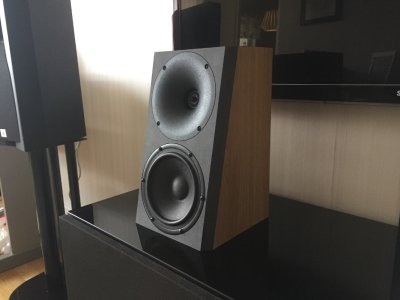In English :
Kaffekoppen wrote:
There is no direct advantage with odd-order filters....the only difference is that they meet at -6db instead of -3db....
———-
Ingoehman: Well...
First of all, odd-order functions preferably meet at -3 dB, while even ones meet at -6 dB (if you are aiming for a straight tone curve addition) but above all, there can be a great advantage with the odd-order filter, since it enables two things:
1. You can get BOTH a fairly straight tone curve for the direct sound and for the energy curve. With even-order transition functions, this is only possible if the bass module is in the absolute vicinity of the top system (which means a maximum of 0.5 meters between them bass-bass).
2. It is an advantage that it can be used to compensate for stereo system errors in the low frequency range, so that you can use the loops that occur to help the far and overturn the closer channel, when the listener is placed obliquely.
However, both of the above points require the help of both careful calculations and measurements if there is to be any hope of finding the right one. Working blindly is almost impossible when it comes to such complicated things - which is an argument for choosing the easier solution - THX sharing!
————-
Kaffekoppen wrote:
18db is too flat (I hear 160hz/-18db, and 30db can cause other problems. Solving them is expensive.
Ingoehman:
1. What problems?
2. What does it cost to solve them?
3. How do you solve them?
————-
Kaffekoppen wrote:
As far as I know, I don't know many people who can hear 160hz/-24db ... I would like to say that I don't know anyone if music is simultaneously played dynamically from the main speakers in that frequency range.
Ingoehman:
It depends on an awful lot of conditions, right?
———
Kaffekoppen wrote:
Note that the NHT 3.3 had a 12" bass divided at 120hz/12db playing sideways. This means that it actually played up to 240hz/-24 db straight sideways... without it being reflected. Oh my, it was an iron core coil

Ingoehman: Yes, there you have it exactly the kind of condition that puts the rule of thumb responses out of action. In that speaker, things were put together. The directionality was largely identical, and in addition the phase conditions were under control thanks to the fact that it was a finished construction, unlike two loose parts whose cooperation can be very difficult (combined by a randomly selected speaker with a randomly selected subwoofer).
In a dedicated construction, I see no obstacle to using filters that cut 6 dB/octave, if power tolerance/distortion is not a problem and the natural frequency response characteristics of the elements allow it.
As I said - it is complicated, and rule of thumb responses are not enough. If one were to summarize the problem of dividing between a pair of top systems and bass modules and the conditions are that they are not at the same point in the room and the crossover frequency is chosen to 80 Hz, it is most of the time that one ends up with a final acoustic crossover with a steepness of 30 dB/octave. Approximately so. However, it should be remembered that it is the levels and phase characteristics of the intersection point, as well as the phase evolution outside the crossover frequency that are of greatest importance, not the filter steepness as such, as long as the function is reasonably steep.
Vh, iö

